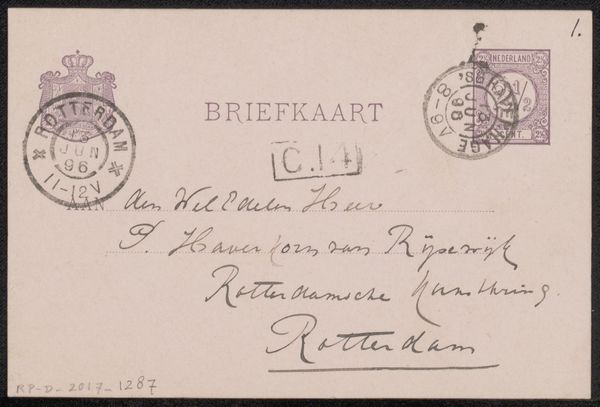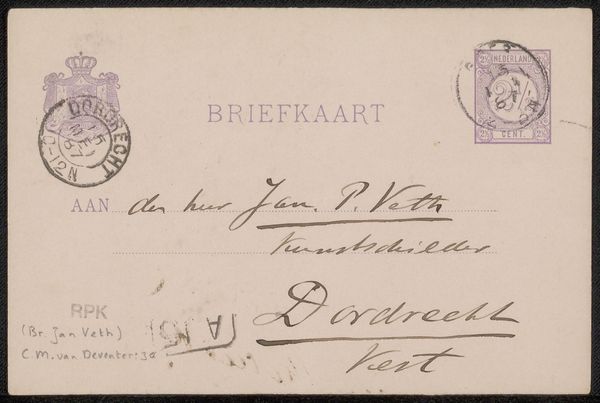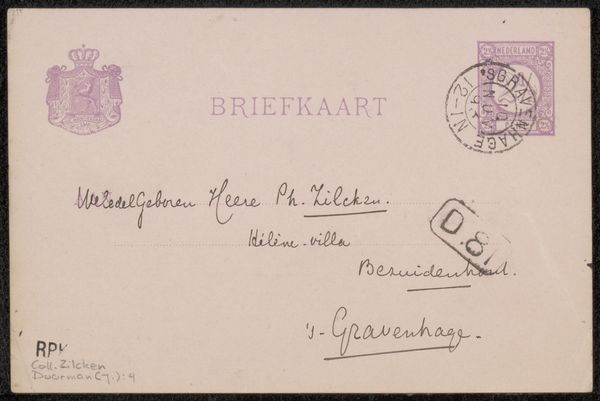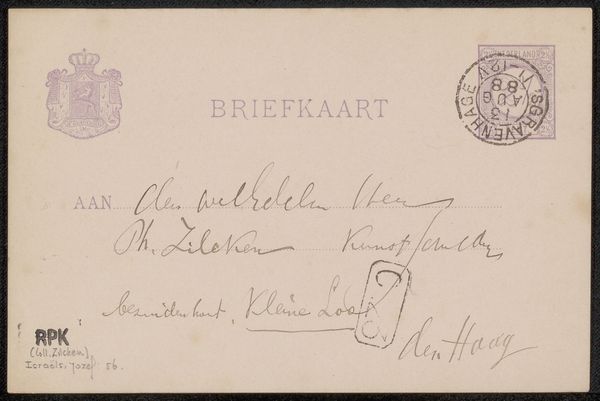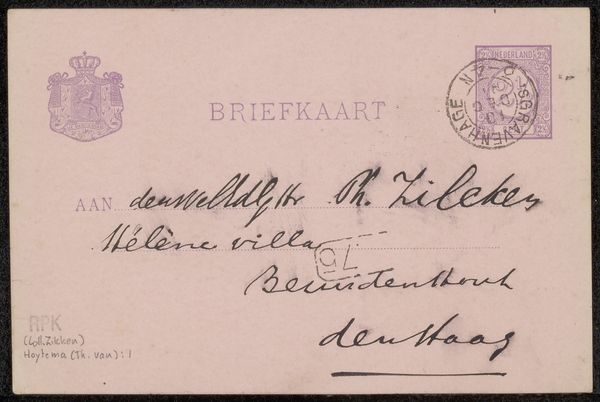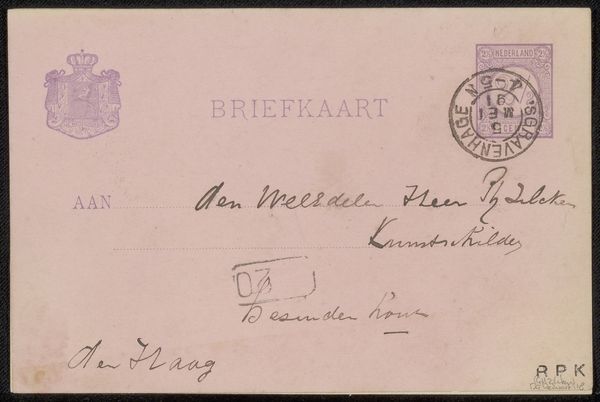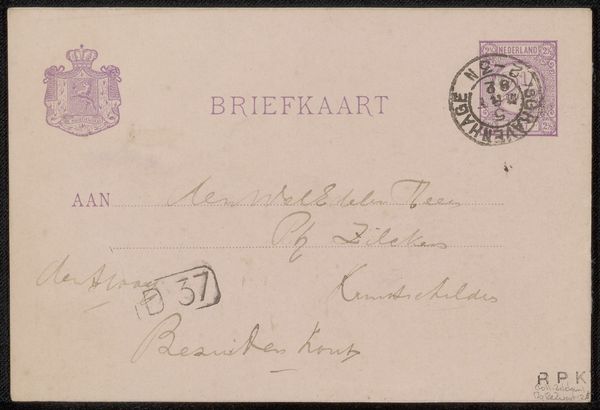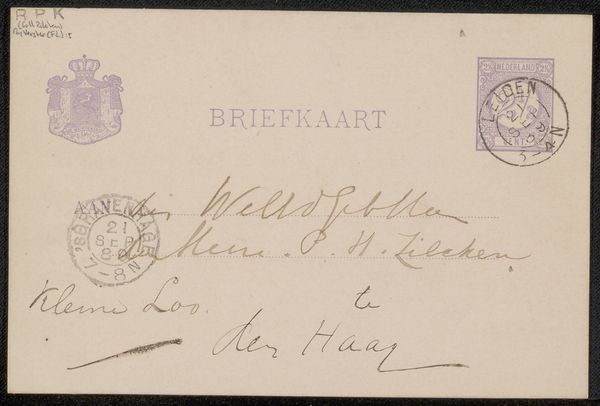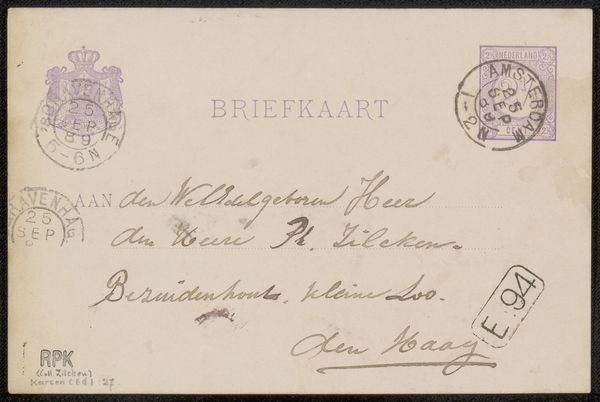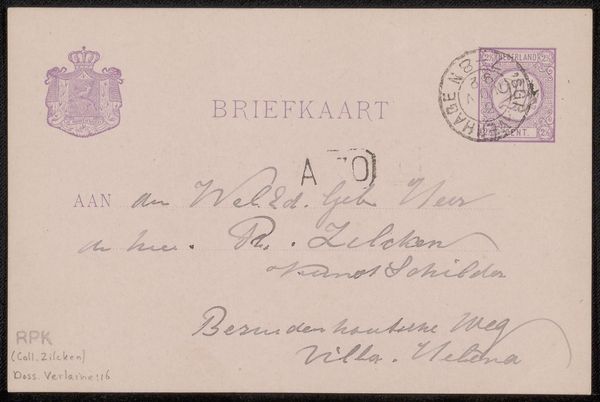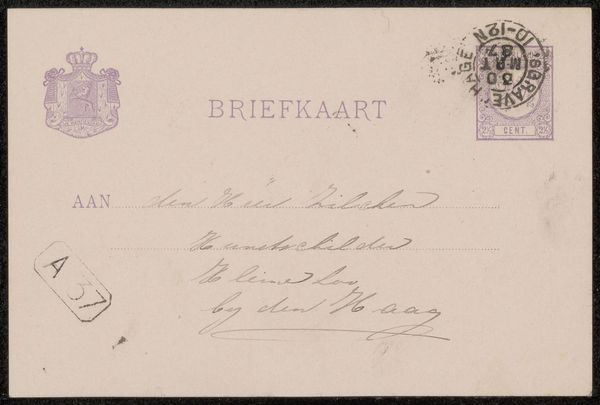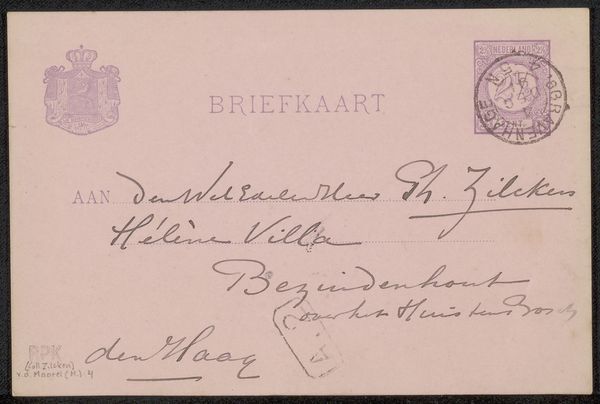
drawing, paper, ink
#
drawing
#
dutch-golden-age
#
pen sketch
#
paper
#
ink
Copyright: Rijks Museum: Open Domain
Curator: Here we have Willem Witsen's "Briefkaart aan Philip Zilcken," likely from 1888. It’s an ink drawing on paper, currently residing in the Rijksmuseum collection. Editor: My first thought is how intimate it feels, almost like we're intruding on a private communication. The handwriting, the stamps—they all tell a story, a connection across time. Curator: Exactly! Witsen's postcard offers a glimpse into the art world of the late 19th century. Zilcken, the recipient, was a well-regarded painter himself, so this wasn't just a casual correspondence, but a dialogue within a specific social and artistic sphere. Editor: What’s fascinating is the immediacy. We are holding what looks like an art supplies request. It also situates the artist in the daily flow of supplies. Consider Witsen sending what’s needed; it’s a micro-economy that supported the entire era and that entire school of art, even down to brushes, ink, and paper! Curator: The postal markings are significant too, adding to its historical texture. Note the Hague postmark of May 10, 1888, and the Dutch postage stamp. Each of these details, while small, situates the artwork within the public postal system, a crucial infrastructure for communication and commerce. Editor: It makes me think about how our methods of communications have drastically changed but in many ways continue doing exactly the same work, creating networks and making exchanges. This card humanizes history; there is an address at the bottom as well. Curator: Indeed. And thinking of its placement in the museum context, it also prompts us to consider the institution's role in preserving such personal artifacts and imbuing them with a broader cultural meaning. What was considered mundane is now a treasure in a collection. Editor: Absolutely. It's a beautiful example of how something seemingly ordinary can offer a potent reflection on artistic networks and interpersonal relationships. Even a seemingly private conversation like the supply needs that artists share offers insights into history, memory, and context. Curator: Precisely. I’m so happy that even this artifact, just like larger pieces of art, opens doors to think about institutions and those networks around individuals like the artist in the frame of gender, race, and other politics of representation.
Comments
No comments
Be the first to comment and join the conversation on the ultimate creative platform.
